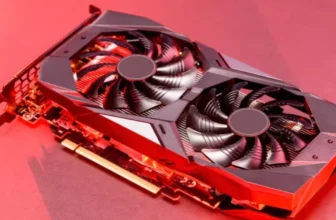
Imagine stepping into a virtual world where light behaves just as it would in reality, casting intricate shadows and reflections that dance around you. This level of visual fidelity is not just a dream but a reality thanks to ray tracing technology. But how exactly does this groundbreaking technology impact gaming graphics? Let’s explore the evolution of gaming graphics, the implications of realistic lighting and shadows, the creation of immersive environments with intricate details, and the considerations surrounding performance.
Evolution of Gaming Graphics
Explore how gaming graphics have advanced over the years, shaping the visual experience for players worldwide. The evolution of gaming graphics has been a remarkable journey. From pixelated sprites to photorealistic 3D environments, the progress has been astounding.
Early games like Pong and Space Invaders laid the foundation, but it was titles like Super Mario 64 and Final Fantasy VII that truly pushed the boundaries of what was possible. As technology improved, so did the graphics. Developers began incorporating complex textures, dynamic lighting, and detailed character models, enhancing the immersive experience for players.
With the advent of high-definition displays and powerful graphics cards, games started to look more lifelike than ever before. Titles such as The Last of Us and Red Dead Redemption 2 showcased the potential of realistic graphics in storytelling. The evolution continues, with advancements like ray tracing taking graphics to new heights, offering stunning reflections, shadows, and lighting effects.
Each generation of games brings us closer to indistinguishable virtual worlds, where the line between reality and simulation blurs. The future of gaming graphics is an exciting frontier, promising even more visually stunning experiences for players to enjoy.
Realistic Lighting and Shadows
Realistic lighting and shadows in gaming graphics have revolutionized the visual experience for players, immersing them in lifelike environments like never before. With ray tracing technology, light behaves in games as it does in the real world, creating stunning effects that enhance realism. Shadows are no longer just dark patches but dynamically adjust based on the position of the light source, object geometry, and material properties. This level of detail adds depth and dimension to game worlds, making them feel more authentic and immersive.
As you traverse through a virtual landscape, you’ll notice how light interacts with different surfaces, casting soft shadows that realistically mimic natural lighting conditions. Whether it’s the warm glow of sunlight filtering through trees or the eerie dimness of a moonlit night, ray tracing elevates the visual fidelity of games by accurately simulating how light bounces, reflects, and refracts in the environment. These advancements in lighting and shadows not only make games visually appealing but also contribute to a more engaging and captivating gaming experience.
Immersive Environments and Details
Step into the virtual world and witness how every detail in the environment comes to life, drawing you deeper into the immersive experience. With ray tracing technology, gaming graphics now offer a level of realism that was previously unimaginable. From the intricate textures of ancient ruins to the way light dances through a dense forest, every aspect of the virtual world is meticulously crafted to transport you to another realm.
Imagine wandering through a bustling marketplace, where the vibrant colors of exotic fruits pop against the backdrop of busy stalls. Each cobblestone underfoot is intricately rendered, adding to the tactile sensation of being present in that moment. As you traverse through these environments, you’ll notice the subtle details like the way shadows shift realistically as the sun sets, or how reflections in a puddle mirror the surrounding architecture with astonishing accuracy.
Ray tracing doesn’t just enhance the visuals; it revolutionizes the way we interact with virtual worlds, making every step you take feel like a journey into the unknown. These immersive environments and attention to detail create a gaming experience that blurs the line between reality and fantasy, leaving you spellbound at every turn.
Performance Considerations
With the rise of ray tracing technology in gaming graphics, considering performance becomes key to ensuring a seamless and immersive experience for players. When implementing ray tracing, your hardware needs to meet certain requirements to handle the complex calculations involved in rendering realistic lighting effects. High-end graphics cards like NVIDIA’s RTX series are designed to support ray tracing efficiently, but older or lower-tier GPUs may struggle to deliver optimal performance.
To achieve smooth gameplay with ray tracing enabled, you may need to adjust graphics settings to find the right balance between visual fidelity and frame rates. Lowering the resolution or tweaking the ray tracing effects can help improve performance without sacrificing too much on the visual front. Additionally, keeping your drivers updated and ensuring proper system cooling can also contribute to better performance when using ray tracing in games.
Trending Products



![Apple Watch Series 10 [GPS + Cellular 46mm case] Smartwatch with Silver Aluminium Case with Denim Sport Band – M/L. Fitness Tracker, ECG App, Always-On Retina Display, Water Resistant](https://beastlytechs.com/wp-content/uploads/2025/03/61szkHk7xfL._AC_SL1500_-499x593.jpg)










